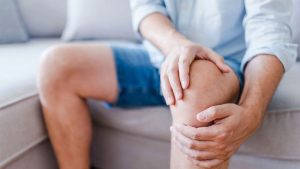Sciatica, readers, is just one of those “life things” that many of us put up with, unfortunately! It can also get in the way of a healthy, active lifestyle because there’s no one-size-fits all treatment for this particular problem.
When you have pain going from your lower back right down your leg, it can be tough to imagine even attempting a workout. However, it’s still important you get up and moving–especially since getting more fit may help ease some of that pain. Before you begin to exercise with sciatica, here are some tips to get you off to a good start.
Use heat therapy
Apply some heat to your rear pelvis before you work out for about 15 minutes. This will boost blood flow and bring healing nutrients to your lower back, as noted in the BMC medical journal (https://trialsjournal.biomedcentral.com/articles/10.1186/s13063-015-0800-4). The heat can also increase flexibility and ease stiffness in the muscles around your spine.
You’ve got multiple heat options, including a warm bath, a gel pack or a hot water bottle. Make sure you put a towel between the heat source and your skin to prevent burning and irritation, and take short breaks to prevent a burn.
Go low impact
If you didn’t really exercise much before, you don’t want to overdo it. You could end up injuring yourself or really making your sciatica flare up. Start as slowly as you need to–such as with five- to ten-minute workouts–and slowly work your way up to a longer time. There are simple sciatica exercises you can find on the internet and try at home, or you could use machines such as the elliptical or a stationary bike with back support. Avoid activities that may jar your spine, such as mountain biking or running, because these types of activities can make your sciatica worse.
Mind your form
Pay attention to your form when you work out and make sure you are doing all the steps to the exercise correctly. A poor form can lead to injury. Be mindful of your movements and breathing, too, as this can help distract you from the anxiety and pain sciatica can bring.
Of course, any new exercise can bring some soreness with it. Use an ice pack on any sore areas you have after you work out so you can reduce some of the inflammation and ease any discomfort.




